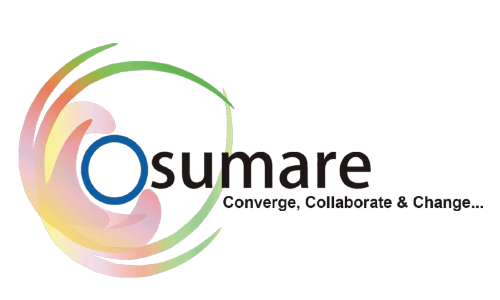1. Optimizing Title Tags and Meta Descriptions
Meta descriptions and title tags are crucial components of on-page SEO. To promote clicks, a well-written title tag should be succinct, packed with keywords, and captivating. Similar to this, a meta description should organically include pertinent keywords while summarizing the page’s content. Meta descriptions increase click-through rates, which benefits SEO even though they are not direct ranking considerations. Maintaining these components’ optimization can improve their exposure in search results and drive more traffic to your website.
2. Creating SEO-Friendly URLs
Both consumers and search engines benefit from a well-structured URL as it makes the topic of the website clear before clicking. URLs have to be brief, informative, and, where appropriate, contain the main keyword. Steer clear of extended strings, extraneous characters, and digits that complicate the URL’s readability. A clear URL structure makes it easier for visitors and search engines to comprehend and rank your content, improving user experience and site navigation.
3. Writing High-Quality, Keyword-Optimized Content
One of the most crucial elements of SEO is still content. Relevant, interesting, and educational information is given preference by search engines. Although keyword stuffing should be avoided, including pertinent keywords organically throughout the material helps raise ranks. Because it offers comprehensive information and efficiently responds to user inquiries, long-form content frequently ranks higher in search results. The user experience and readability of material are improved by using headers, bullet points, and brief paragraphs.
4. Using Header Tags Properly
Header tags (H1, H2, H3, etc.) aid in content organization and facilitate search engine comprehension of a page’s structure. The core keyword and a clear definition of the page’s topic should always be included in the H1 element. A logical structure should be followed by subheadings that use the H2, H3, and H4 tags in order to divide material and enhance readability. When header tags are used correctly, they aid search engines in assessing the significance of different content parts, which eventually improves SEO.
5. Optimizing Images for SEO
Although images increase user engagement, they must also be SEO-optimized. A website’s user experience and search engine results may suffer due to delayed loading times caused by large picture files. Page load speed may be increased by preserving picture quality while compressing them. Additionally, search engines may comprehend what a picture symbolizes when descriptive file names and alt text are used. Because it gives visually challenged users descriptions, alt text is especially crucial for accessibility.
6. Implementing Internal Linking Strategies
Internal links enhance navigation and help disperse link authority throughout your website. Linking to pertinent pages on your website builds a network that lets search engines know how one page relates to another. By directing visitors to more worthwhile material, internal links can keep consumers interested and extend their time on your website. Enhancing user experience and bolstering SEO are two benefits of using descriptive anchor text for internal links.
7. Improving Page Speed for Better Rankings
A sluggish website can lead to significant bounce rates, and page speed is an important ranking element. Reducing superfluous code, turning on browser caching, compressing pictures, and utilizing a Content Delivery Network (CDN) are all ways to improve page performance. Google’s PageSpeed Insights tool offers suggestions for enhancements and assists in identifying speed-related problems. Optimizing your website for speed on all platforms enhances both search engine rankings and user experience.
8. Enhancing Mobile-Friendliness for SEO
Having a mobile-friendly website is crucial because the majority of consumers access the internet through mobile devices. Mobile-friendly websites score higher in Google’s search results. A responsive design offers a consistent experience across devices by automatically adjusting to various screen sizes. Testing mobile usability on a regular basis guarantees that all components—text, graphics, and buttons—work correctly across a range of devices.
9. Adding Schema Markup for Rich Results
Structured data, sometimes referred to as schema markup, improves search results by adding more details about your material. Rich snippets, frequently asked questions, reviews, and other elements that enhance search results are examples of this. Using schema markup improves your content’s comprehension by search engines and raises the possibility that it will show up in improved search results. Click-through rates are frequently greater for websites that use structured data.
10. Prioritizing User Experience (UX) for SEO
A key factor in how users engage with your website is user experience, or UX. A well-designed website increases user engagement with its clear information, easy-to-use navigation, and tidy style. Easy navigation, mobile compatibility, and page speed are all elements that go into creating a satisfying user experience. Because search engines like sites that offer a smooth, pleasurable experience, making sure your website is aesthetically pleasing and free of technical problems may greatly improve SEO results.
11. Keeping Content Fresh and Updated
Websites that consistently provide fresh data, statistics, and insights to their material are given preference by search engines. You can maintain the relevance of your material and raise your rankings by going over previous blog entries again and updating them with new information. In order to guarantee that readers always obtain correct and worthwhile material, broken links and obsolete information are checked. A dynamic website with regularly updated material lets search engines know that your site is trustworthy and authoritative.
Conclusion
You may raise your website’s ranks, increase organic traffic, and improve user experience by putting these on-page SEO tactics into practice. Your website will stay competitive in search engine results if you prioritize title tags, structured URLs, excellent content, quick page loads, and mobile friendliness. Regularly improving your on-page components can help you keep up a strong internet presence. SEO is a continuous effort.

